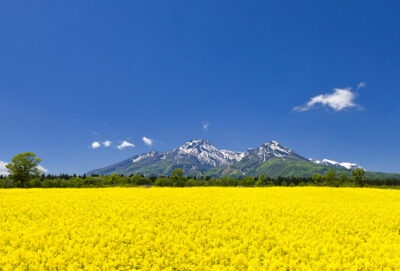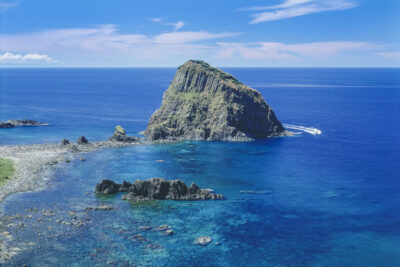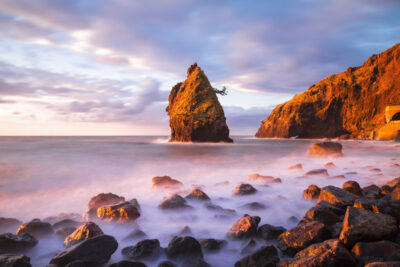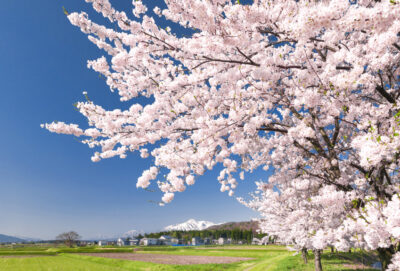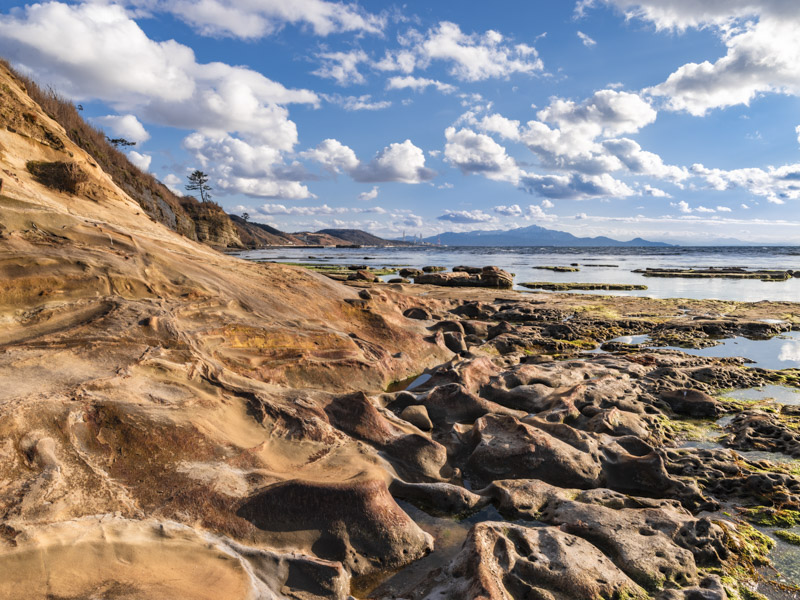
砂岩泥岩互層の地層が波に侵食されて美しい海岸の地形を形成した椎谷観音岬。そのやわらかい露頭のおかげで、岩の間にはヤドカリやサザエなどたくさんの貝が住み、海岸では貝殻を拾う人も時々見かけます。中越沖地震の日、この岬の崖が崩れたため、この手前で迂回し刈羽村に取材に入りました。特に柏崎や長岡や小千谷などの中越地域に産出する石油や天然ガスなどはこの地層に由来し、2022年の県内の天然ガス採掘量は国内の76・7%、原油は国内の65・4%の採掘量(新潟県調べ)。日本石油(現在のENEOS)は最初に柏崎で興されました。2011年の東日本大震災以来国内の原子力発電所は発電停止が続いていますが、休止中の世界最大級の原子力発電所が写真の向こうに見えます。西山町出身の田中角栄が首相だった時に電源三法を成立させた結果、柏崎と刈羽村にまたがる地区に巨大な原子力発電基地ができました。埋蔵する石油やガスがたまる理屈となっている地層の向こうに巨大な発電所。この地域は昔も今も日本のエネルギー事情に大きな影響を与え続けています。この風景は風光明媚さを越えて過去現在未来において、日本の政治や経済に深く関わってきました。
この説明を書いている時にニュースが入ってきました。東京電力柏崎刈羽原子力発電所の再稼働の是非を問う県民投票条例の制定を求める市民団体が2025年3月27日、約14万3000人の有効署名を花角英世知事宛てに提出、4月16〜18日の臨時議会で採決される見通しだ。有効署名は条例制定の直接請求に必要な3万6000人(有権者の50分の1)の4倍近くに。20日以内に議会を招集し、自らの意見を付けて議会に条例案を提出することになっている。柏崎市と刈羽村の原発推進団体が反対姿勢を示している中、県議会の自民党や知事がどう判断するか。しかし2011年以降の住民投票条例案はことごとく否決。住民投票条例案に(主に自民党)議員が反対する理由は、住民投票について「賛否二者択一で意見を集約できない」「選挙で選ばれた者が判断する」「専門性の高い技術の安全性などの論点は素人に馴染まない」という理由だ。
住民投票はお金がかかることではある。しかし市民が選挙で議員を選ぶ時は原子力発電の再稼働云々のみで判断するわけではない。議員も原子力発電の技術に詳しいわけではないでしょう。代表民主制の機能不全や補完的な役割において、住民投票という民主主義的な手続きを行政や議会や一人一人の議員が尊重し活用しながら自治を進めて行くべきだと思う。自分の決定に責任を持つことが市民社会の成熟につながると思います。地方自治体は中央集権に文句を言いながら、地方自治体は市民の意見を握りつぶす。自己矛盾に気がつかないふりをする知事や自民党、そして代表を選んできた市民の問題でもある。
The beautiful coastal topography of Cape Shiitani Kannon was formed by waves eroding the alternating layers of sandstone and mudstone. Thanks to its soft outcrops, many hermit crabs, turban shells, and other shellfish live among the rocks, and people can sometimes be seen picking up shells on the beach. On the day of the Chuetsu-oki Earthquake, the cliff on this cape collapsed, so we detoured in front of this point and went to Kariwa Village to cover the earthquake. The oil and natural gas produced in the Chuetsu region, especially in Kashiwazaki, Nagaoka, and Ojiya, come from this formation, and by 2022, the prefecture will be extracting 76.7% of Japan’s natural gas and 65.4% of Japan’s crude oil (according to Niigata Prefecture). Nippon Oil (now ENEOS) was first drilled in Kashiwazaki, and although nuclear power plants in Japan have been shut down since the Great East Japan Earthquake in 2011, one of the world’s largest nuclear power plants, which is currently idled, can be seen beyond the picture. As a result of the enactment of the Three Power Source Laws when Kakuei Tanaka, a native of Nishiyama Town, was prime minister, a huge nuclear power base was built in the area straddling Kashiwazaki and Kariwa Village. The huge power plant is located beyond the geological formation that is the logical place for oil and gas reserves to accumulate. This area has been and continues to be a major influence on Japan’s energy situation. Beyond its scenic beauty, this landscape has been deeply involved in Japan’s politics and economy in the past, present, and future.
As I write this description, news comes in. On March 27, 2025, a citizens’ group seeking the enactment of a prefectural referendum ordinance on whether or not to restart TEPCO’s Kashiwazaki-Kariwa nuclear power plant submitted approximately 143,000 valid signatures to Governor Hideyo Hanazumi, who is expected to vote on the matter at an extraordinary assembly meeting on April 16-18, 2012. The number of valid signatures is nearly four times the 36,000 (one-fiftieth of the voters) required for a direct request for the enactment of the ordinance, and the governor is scheduled to convene the assembly within 20 days and submit the draft ordinance to the assembly with his own opinion. With pro-nuclear groups in Kashiwazaki City and Kariwa Village taking an opposition stance, it remains to be seen what the LDP in the prefectural assembly and the governor will decide. However, every proposed referendum ordinance since 2011 has been rejected. The reasons for the (mainly LDP) councilors’ opposition to the proposed referendum ordinance are that “it is impossible to consolidate opinions by choosing between two options of approval or disapproval,” “elected officials will make the decision,” and “issues such as the safety of highly specialized technology do not sit well with lay people.
Referendums can be expensive. However, when citizens elect their representatives in elections, they do not make decisions based solely on whether or not to restart nuclear power generation. Nor will the legislators be familiar with the technology of nuclear power generation. In the dysfunctional and complementary role of representative democracy, the democratic procedure of referendum should be respected and utilized by the administration, the assembly, and each and every assembly member to promote self-government. I believe that taking responsibility for one’s own decisions will lead to the maturation of civil society. Local governments complain about centralization, while local governments suppress the opinions of citizens. This is a problem for the governor and the LDP, who pretend not to notice the self-contradiction, and also for the citizens who have elected their representatives.
PENTAX645Z 29mm 1/60秒 f:20
©️photo by Nakamura Osamu
